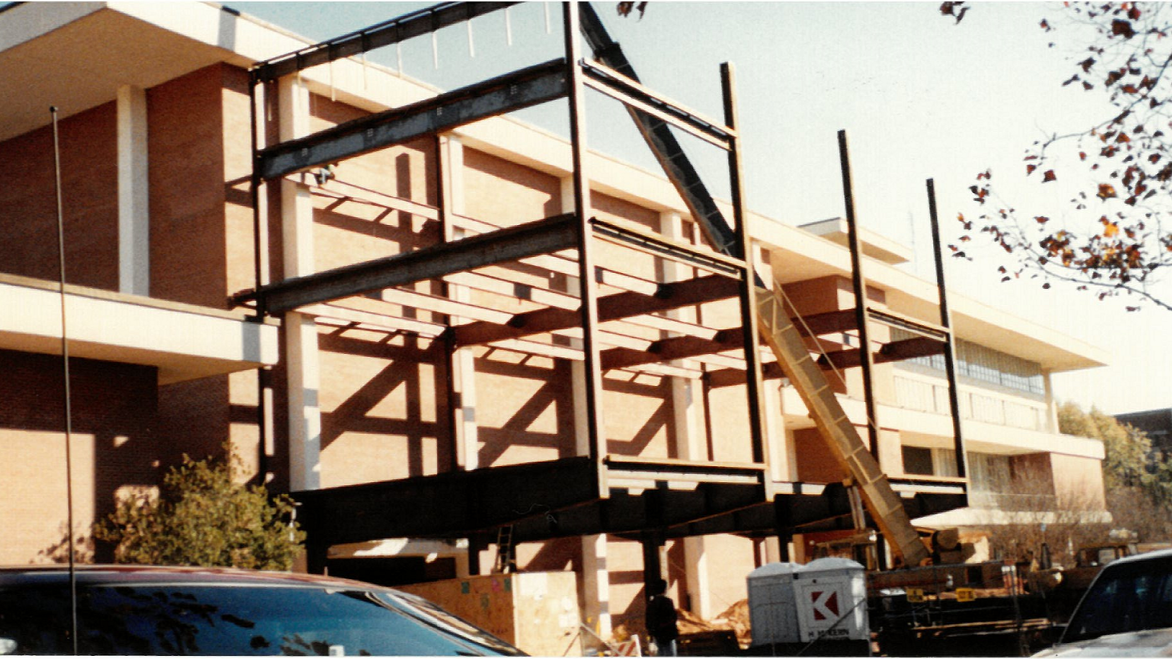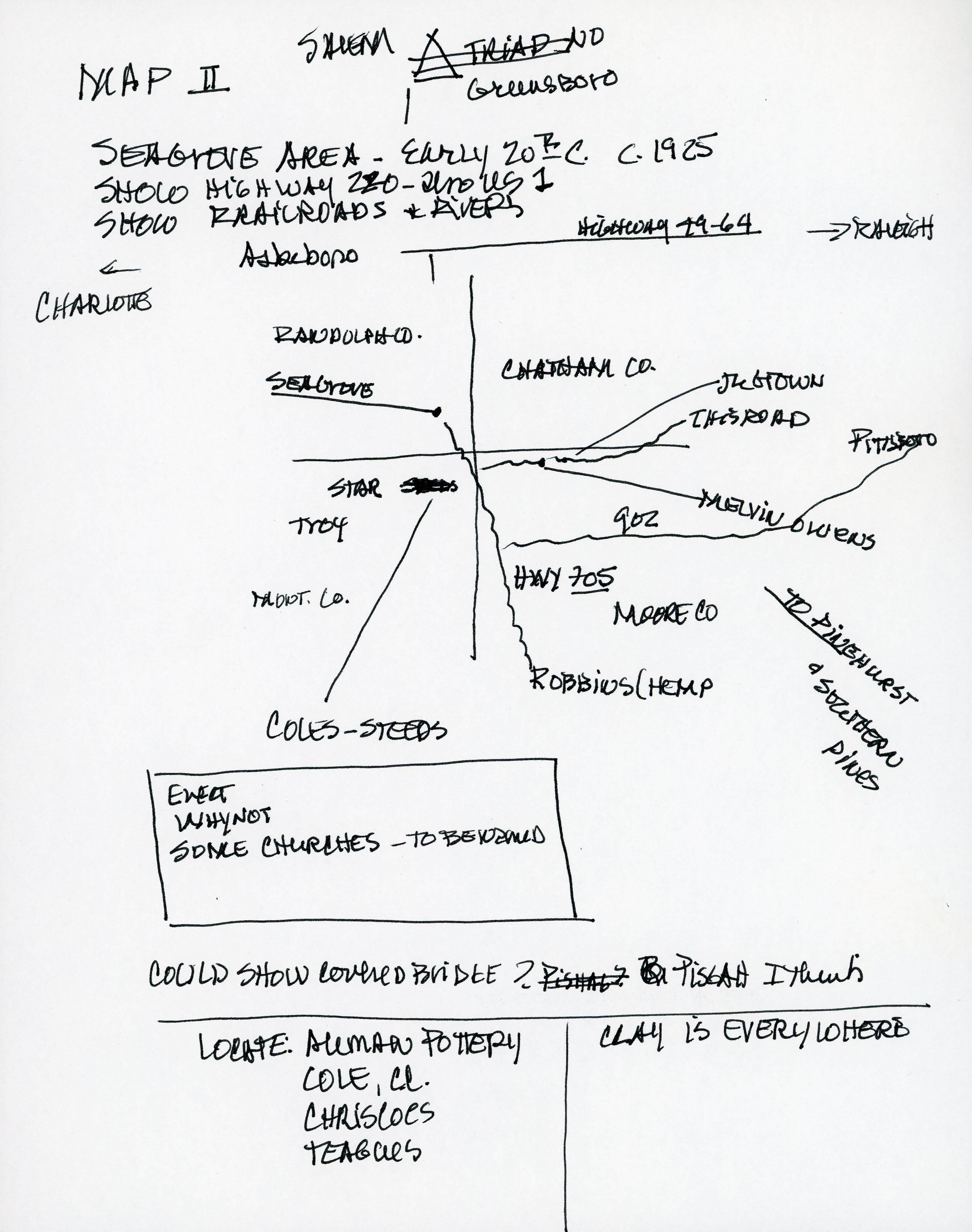
Construction of the Visual Arts Center (Box 26, Folder 6)

Construction of the Visual Arts Center (Box 26, Folder 6)
This blog post contributed by Emma Eubank and Katie Bushman, Special Collections Graduate Desk Assistants.
The Special Collections Research Center is excited to announce that the Gregg Museum of Art & Design Records are now available for researcher use. With materials dating from 1964 to 2023, this collection represents the Gregg through its many naming iterations and location changes. Materials in this collection showcase exhibition planning, administrative work, communications between the Gregg and artistic communities, publications and community engagement. The majority of the collection comprises the records of director Charlotte Vestal Brown and includes correspondence, daybooks, exhibition research and planning, and the records of the Friends of the Gregg.
The Gregg began when former Chancellor John Caldwell and former School of Design Dean Henry Kamphoefner founded the Visual Arts Program in the 1970s. Formed to promote the display of and engagement with the college’s permanent art and architecture collections, the program served the NC State community through its organization of exhibitions, talks, tours, internships, and events. In 1992, the renamed Visual Art Program found a home in the Talley Student Center, where it continued the conservation and exhibition of art, from student work to works by international artists. In 2007, what was at that point the Gallery of Art & Design, became the Gregg Museum of Art & Design. The renaming was in honor of Nancy Gregg, a lifelong supporter of the arts in Raleigh who helped secure an endowment for the gallery, and her husband John Gregg, a member of the NCSU Board of Trustees.


Charlotte Vestal Brown began as a curator of art at NC State University in 1982, and in 1985 became the director of the Gregg. In her 27 years as director until her retirement in 2009, Brown oversaw the design and execution of exhibitions, fundraising initiatives, and art acquisitions. Brown connected the Gregg with the larger university community, collaborating with the University Art Acquisition Committee and the Art Studies program. In addition to fostering relationships within the university, Brown also established the Gregg’s reputation with organizations like the North Carolina Arts Council and the Institute of Museum and Library Services. Charlotte is remembered for using “her keen intellect, vision and persistence … to further the development of a museum that NC State can be proud of for generations to come" (Box 23, Folder 11).

In 2014, the Gregg moved out of its previous home in Talley Student Center to the former Chancellor's Residence at 1903 Hillsborough Street. It reopened to the public in 2017. The Gregg now holds over 54,000 objects in its permanent collection and is the largest collection of outsider art (art created by self-taught or untrained artists outside of the established art scene) in North Carolina. The collection includes textiles, ceramics, paintings, artifacts, photographs, modern furniture, and more. The Gregg executes six to eight exhibitions per year on site, in addition to exhibiting work at various places in the Talley Student Center and around campus.

In 1988, the Gregg put on the first public exhibition of works by Annie Hooper, a self-taught folk sculptor from the Outer Banks of North Carolina. Over the last four decades of her life, Hooper created thousands of Biblically-inspired figures out of driftwood, putty, seashells, and cement. Her collection was acquired by the Gregg, and the Gregg Museum of Art & Design Records also include the records and plans for the ambitious task of storing and organizing the vast collection.

Charlotte Vestal Brown’s collection of records includes her extensive research notes on North Carolina pottery, especially the pottery tradition coming out of Seagrove, NC. Under Brown’s direction, the Gregg put on over a dozen exhibitions highlighting artists from the rich history of ceramics in North Carolina. Highlights include 1987’s Vernacular Pottery of North Carolina: 1982-1986, 2001’s North Carolina Pottery Masters: C.R. Auman and C.B. Masten, and 2008’s Pamela and Vernon Owens, Potters of Jugtown.
For records related to Charlotte Vestal Brown’s study of the practice of building in North Carolina, see the Charlotte Vestal Brown Wainwright Papers. If you are interested in photographs of past directors, check out the Roger Manley Collection of Gregg Museum Director Photographs.
If you have any questions or are interested in viewing Special Collections materials, please contact us at library_specialcollections@ncsu.edu or submit a request online.
The Special Collections Research Center is open by appointment only. Appointments are available Monday–Friday, 9am–6pm and Saturday, 1pm–5pm. Requests for a Saturday appointment must be received no later than Tuesday of the same week.